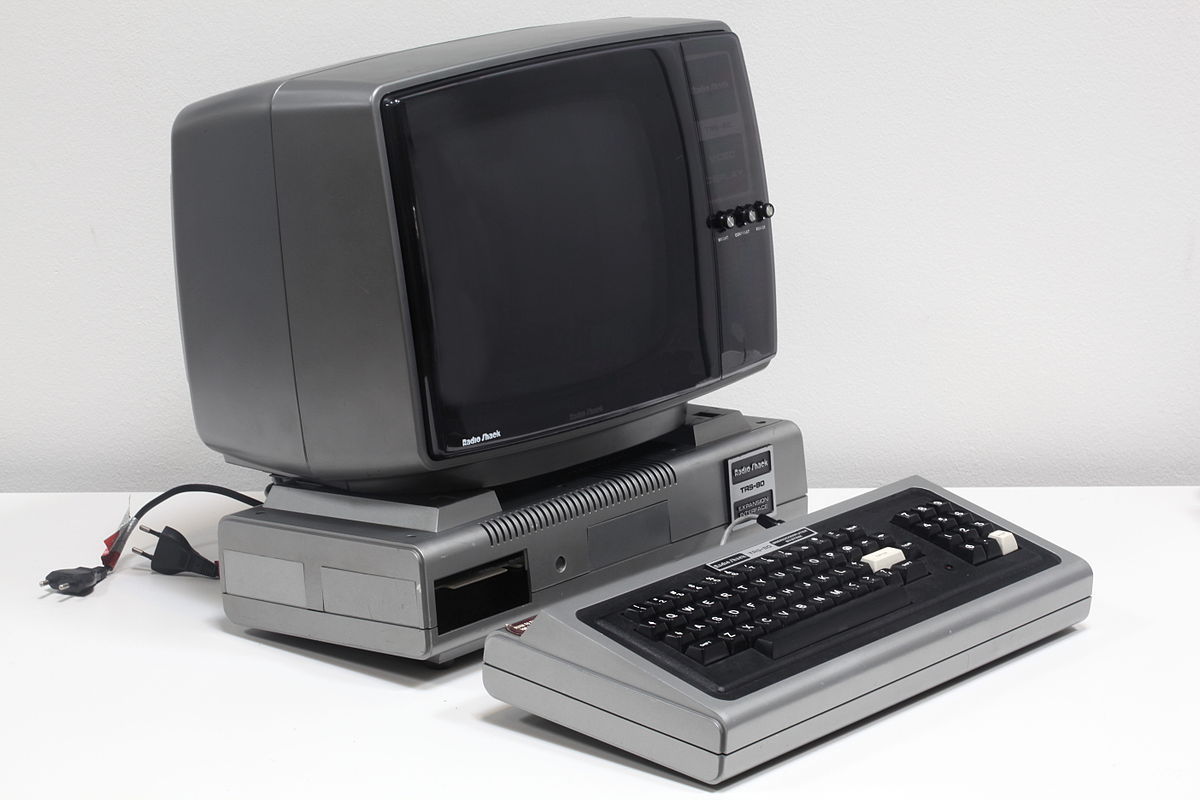Tandy Radio Shack – 80 Home computer
TRS-80
http://darth-azrael.tumblr.com/post/163450055879/retrobear-tandy-radio-shack-80-home-computer
The TRS-80 Model I (originally just called the TRS-80) was Radio Shack’s first computer. Introduced in 1977, it was one of the earliest home computers. It competed with the Commodore PET and Apple II as well as the Atari 400/800 all of which were introduced around the same time frame. The TRS-80 was based on the Zilog Z80 CPU and originally shipped with just 4K of RAM though it was expandable to 48K. Most other home computers at that time were based on the 6502 processor.
The TRS-80 enjoyed a brief period of domination as it was the best selling computer, outselling Commodore and Apple, through 1981. It also had the largest selection of software during that time period. In 1980 it was selling at a rate triple that of Apple who was in second place. After 1981, the TRS-80’s dominance faded as cheaper and graphically more sophisticated computers like the VIC-20 arrived and Apple started gaining a greater foothold. The TRS-80 had a disadvantage in that it did not support color graphics or much in the way of graphics at all beyond basic text. Oddly, at a time when most computers had 40-column displays or perhaps 80-column displays with an upgrade, the TRS-80 had a 64-column display. In addition to TR-DOS, the TRS-80 could also run CP/M but only with modifications.
A cassette tape drive was included with the TRS-80 to save an load programs. However, it was slow and unreliable. It was difficult to adjust the volume settings correctly for saving and it was often a process of trial and error. In order to add any other hardware, including a disk drive, real-time clock, serial port or even a printer, an Expansion Interface box had to be purchased along with the appropriate expansion card. The Expansion Interface (E/I) box is the box the monitor is sitting on in the picture above. The Expansion Interface box included a floppy disk controller. A single density, 85Kb floppy drive became available about six months after the TRS-80 was introduced. This was also initially unreliable, largely due to buggy TRS-80 ROM code but could be compensated for. More capable third party drives eventually became available as did a hard drive but it was extremely expensive at nearly $2500 for 5MB. A second 5MB drive could be added to the hard drive chassis for an additional $2000. The hard drive chassis could hold up to four drives for a whopping 20 MB at a bargain price of $8500.
Despite Radio Shack’s mostly low quality software, there were a large number of third party titles available that were much better. For a long time, Radio Shack refused to sell any software it did not develop and this probably contributed the the TRS-80’s fall from domination over the years. Despite note having much in the way of graphical capabilities, there were a number of games (including Zork!) available in addition to productivity and other types of software.
The TRS-80 was succeeded in 1980 by the Model III (the Model II was a completely different non-compatible business oriented machine) and in 1984 by the Model 4. There was also a luggable version (4P) and finally in 1985 the 4D was introduced. This was the last TRS-80 computer and was available all the way through 1991.


